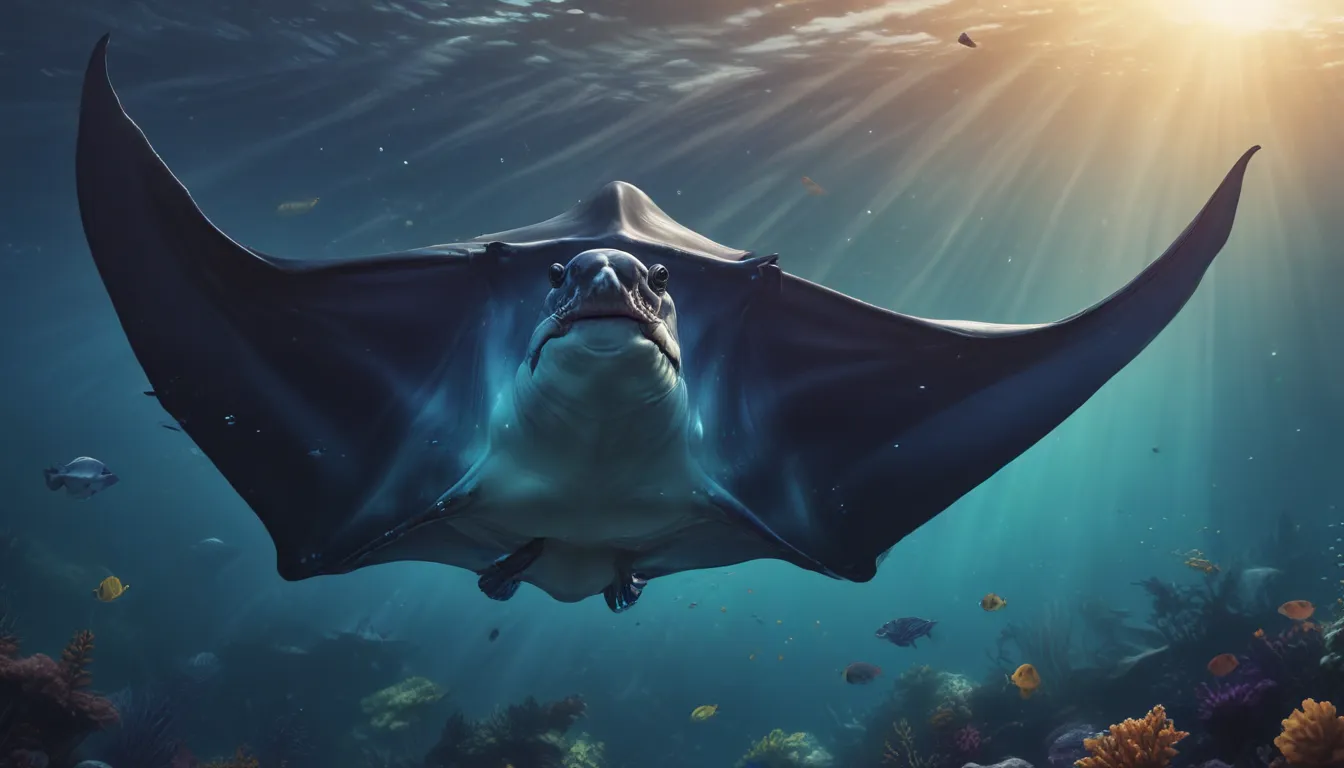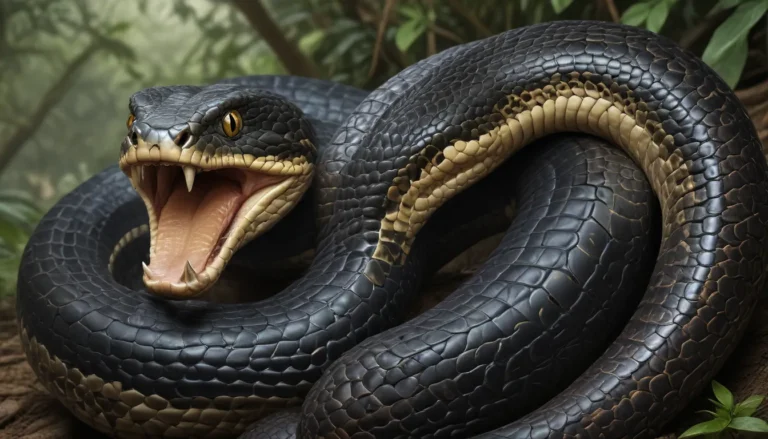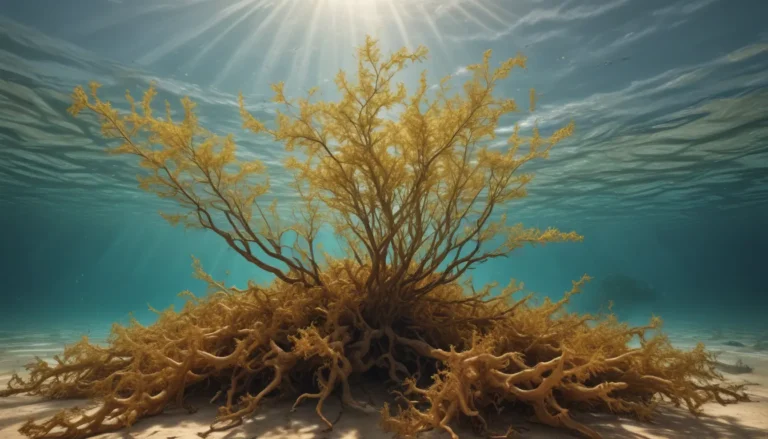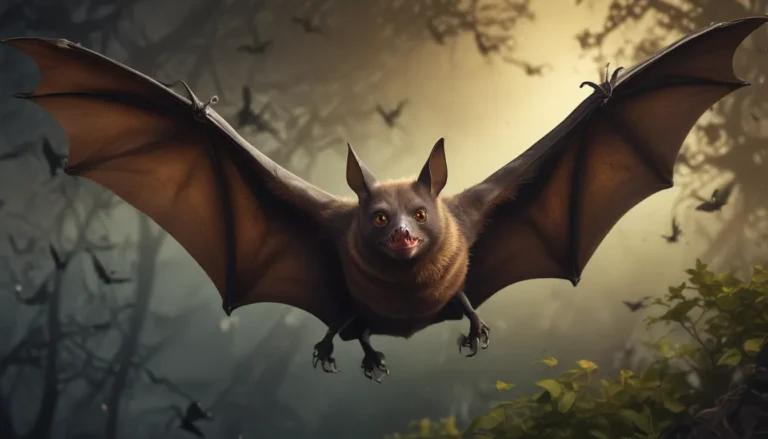The pictures we use in our articles might not show exactly what the words say. We choose these pictures to make you interested in reading more. The pictures work together with the words but don’t take their place. The words still tell you the important facts.
Manta rays are majestic creatures that gracefully glide through the world's oceans, captivating the hearts of marine enthusiasts and casual observers alike. These gentle giants with their distinctive flattened bodies, large mouths, and active filter-feeding habits continue to intrigue scientists and nature lovers. In this article, we will delve into 12 fascinating facts about manta rays that will broaden your understanding and appreciation of these incredible creatures. From their magical encounters with other marine species to their migratory patterns and intelligence, manta rays are truly extraordinary beings waiting to be discovered.
Discovering the Majestic Ocean Giants
Manta rays are truly awe-inspiring creatures of the ocean, with their large size and graceful movements captivating all those fortunate enough to witness them in their natural habitat. Their majestic presence leaves a lasting impression on all who encounter them.
The Impressive Size and Wingspan of Manta Rays
Manta rays are among the largest fish in the ocean, boasting a staggering length of up to 23 feet and an impressive wingspan of up to 25 feet. Their enormous size makes them a sight to behold, showcasing the wonders of the marine world.
Unveiling the Gentle Giants of the Ocean
Despite their intimidating size, manta rays are gentle creatures known for their peaceful behavior. They pose no threat to humans, making them a beloved attraction among divers and snorkelers seeking unforgettable experiences beneath the waves.
Diving into the Unique Filter-Feeding Technique
Manta rays are filter feeders, consuming plankton and small fish with their specialized gill rakers. These adaptations allow them to filter out prey as they gracefully glide through the ocean, showcasing nature's remarkable efficiency and beauty.
Exploring the Long Lifespan of Manta Rays
Manta rays have a relatively long lifespan compared to other fish species, living up to 50 years. This longevity offers them the opportunity to have a significant impact on the marine ecosystems they inhabit, highlighting their crucial role in the underwater world.
Witnessing the Spectacular Leaping Abilities
Manta rays exhibit impressive aerial acrobatics, often seen leaping out of the water. While the exact reason behind this behavior remains a mystery, it is believed to be a form of communication or a way to remove parasites, showcasing their remarkable agility and grace.
Unraveling the Mysterious Migration Patterns
Manta rays are known for their extensive migratory behavior, traveling long distances for food or mating purposes. Their predictable routes sometimes surprise researchers with unexpected movements, adding to their enigmatic and captivating nature.
Embracing the Complexity of their Social Structure
Manta rays are highly social creatures often found swimming in groups known as "fevers," consisting of up to 50 individuals. This complex social structure highlights the depth of their relationships and interactions underwater, further showcasing their fascinating nature.
Protection through Natural Camouflage
Manta rays have a unique coloration pattern on their dorsal side, aiding in blending with their surroundings for protection against potential predators. This natural camouflage showcases their adaptation to the diverse environments they inhabit, ensuring their survival in the vast ocean.
Addressing the Vulnerability to Extinction
Despite their resilience, manta rays face significant threats such as habitat loss, pollution, and overfishing. Listed as vulnerable on the IUCN Red List of Threatened Species, conservation efforts are essential to safeguard these magnificent creatures for future generations to admire and cherish.
Embracing the Cultural Significance
Manta rays hold cultural significance in many communities worldwide, considered sacred or symbols of good fortune. This cultural reverence further enhances their mystique and importance, highlighting the deep connection between humans and these majestic creatures.
Engaging in Conservation Efforts
Various organizations and conservation groups are dedicated to protecting and preserving manta rays through research, education, and advocating for responsible tourism. These efforts aim to ensure a sustainable future for these incredible creatures, emphasizing the importance of united action in safeguarding marine biodiversity.
In conclusion, the captivating world of manta rays unveils the sheer beauty and wonder of these magnificent creatures. From their impressive size and graceful movements to their unique feeding techniques and mysterious behaviors, manta rays continue to inspire awe and admiration worldwide. It is crucial that we come together to protect and conserve these gentle giants, ensuring their survival and the preservation of our precious marine ecosystems for generations to come.
Connect with the Enchanting Realm of Nature
Embark on enthralling journeys above and below water, discovering the vibrant ecosystems where manta rays thrive alongside a diverse array of marine life. Explore Lego Ninjago sets to unleash your creativity and imagination, soaring like manta rays through currents of inspiration and discovery. Dive into the wonders of Buccoo Reef's colorful corals and sea creatures, immersing yourself in the beauty and complexity of the underwater realm.
Frequently Asked Questions
- Where can manta rays be found?
-
Manta rays inhabit tropical and subtropical waters worldwide, including popular dive destinations such as the Maldives, Indonesia, Mexico, and the Great Barrier Reef.
-
How big can manta rays get?
-
Manta rays can reach wingspans of up to 23 feet (7 meters) and weigh up to 3,000 pounds (1,360 kilograms), making them among the largest species of rays.
-
What do manta rays eat?
-
Manta rays primarily feed on plankton, small fish, and microscopic organisms by swimming with their mouths open to filter out food particles with their gill rakers.
-
Are manta rays dangerous?
-
No, manta rays are gentle creatures and pose no threat to humans. They are known for their curious and non-aggressive behavior towards divers and snorkelers.
-
How long do manta rays live?
-
Manta rays have an average lifespan of 20 to 30 years, with some individuals living up to 50 years, showcasing their resilience and longevity.
-
Do manta rays have predators?
- Manta rays have few natural predators due to their large size and speed, making them challenging targets for predators. However, they may occasionally fall victim to sharks or killer whales.
Explore the enchanting world of manta rays, where beauty, wonder, and grace intertwine to create a mesmerizing tapestry of marine life. By understanding, respecting, and conserving these magnificent creatures, we can ensure a brighter future for our oceans and the remarkable beings that call them home. Join us in the journey to protect and preserve the magic of manta rays for generations to come, embracing the wonders of nature with open hearts and curious minds.






